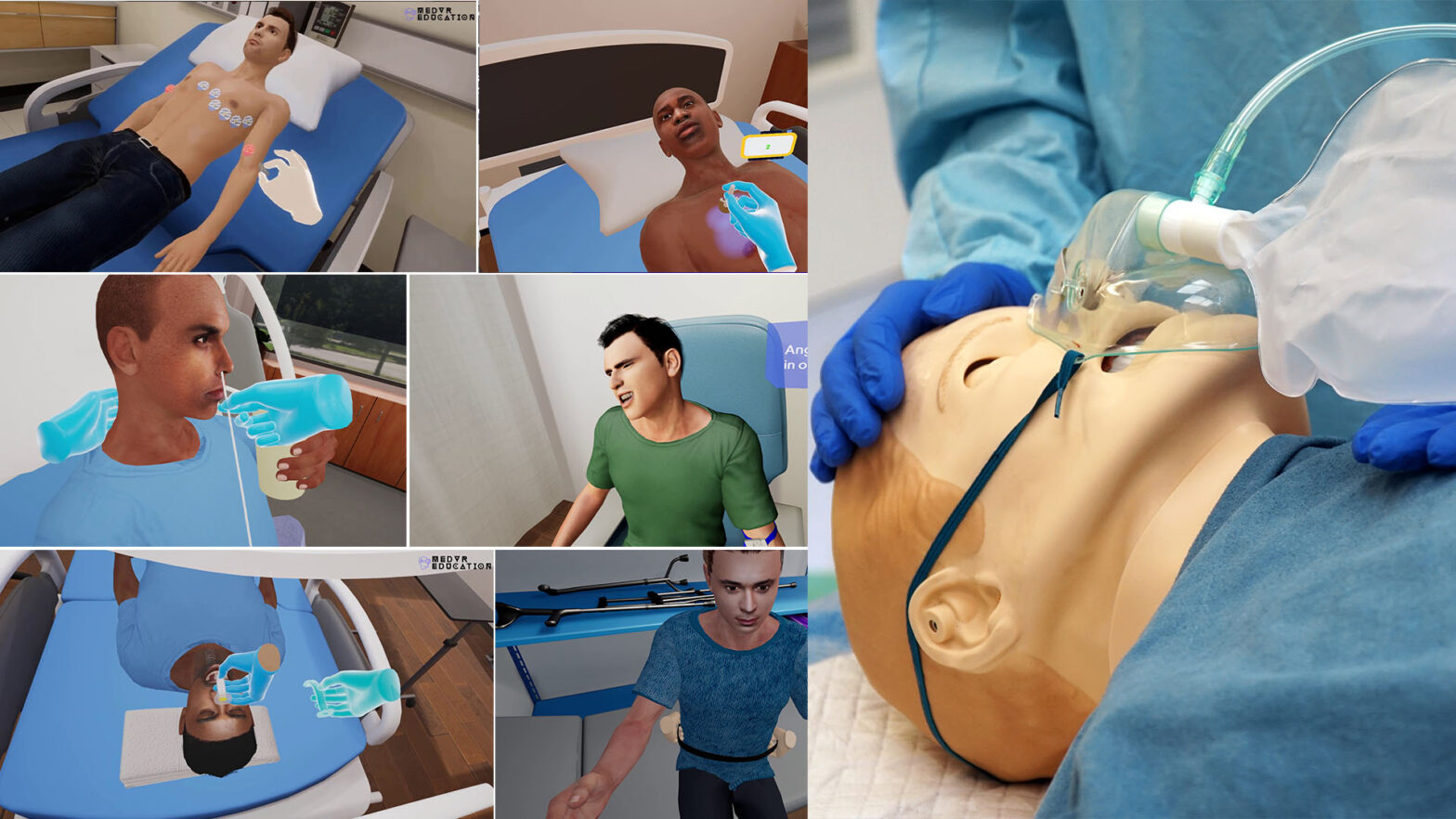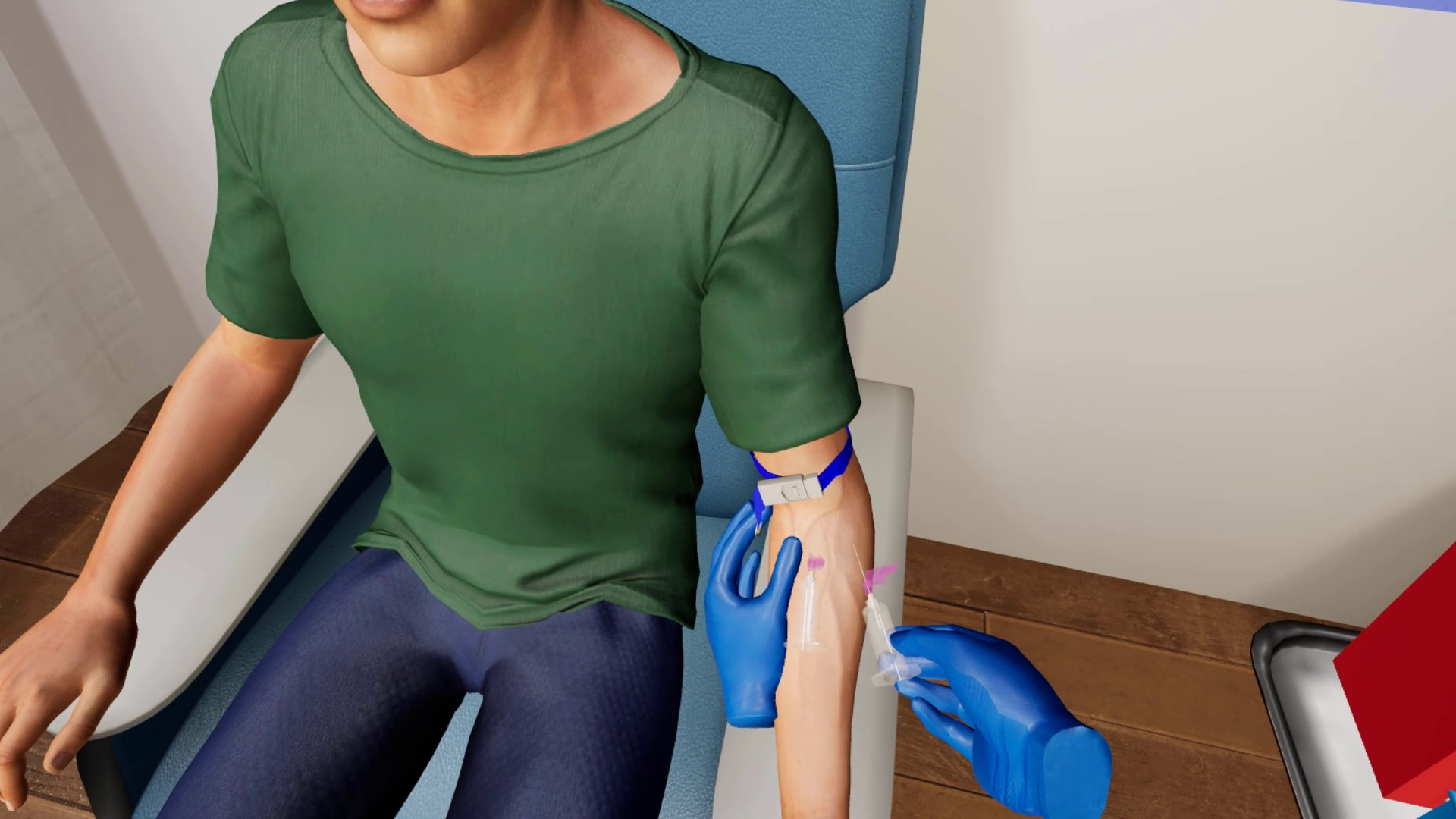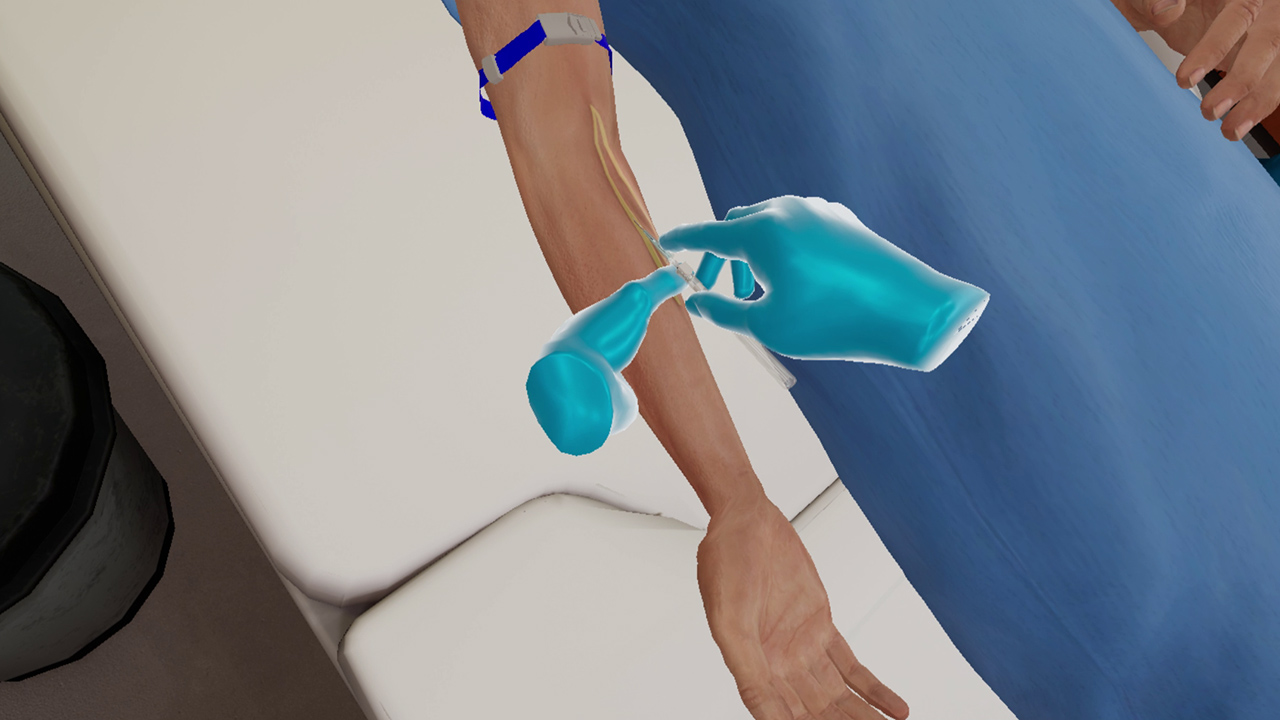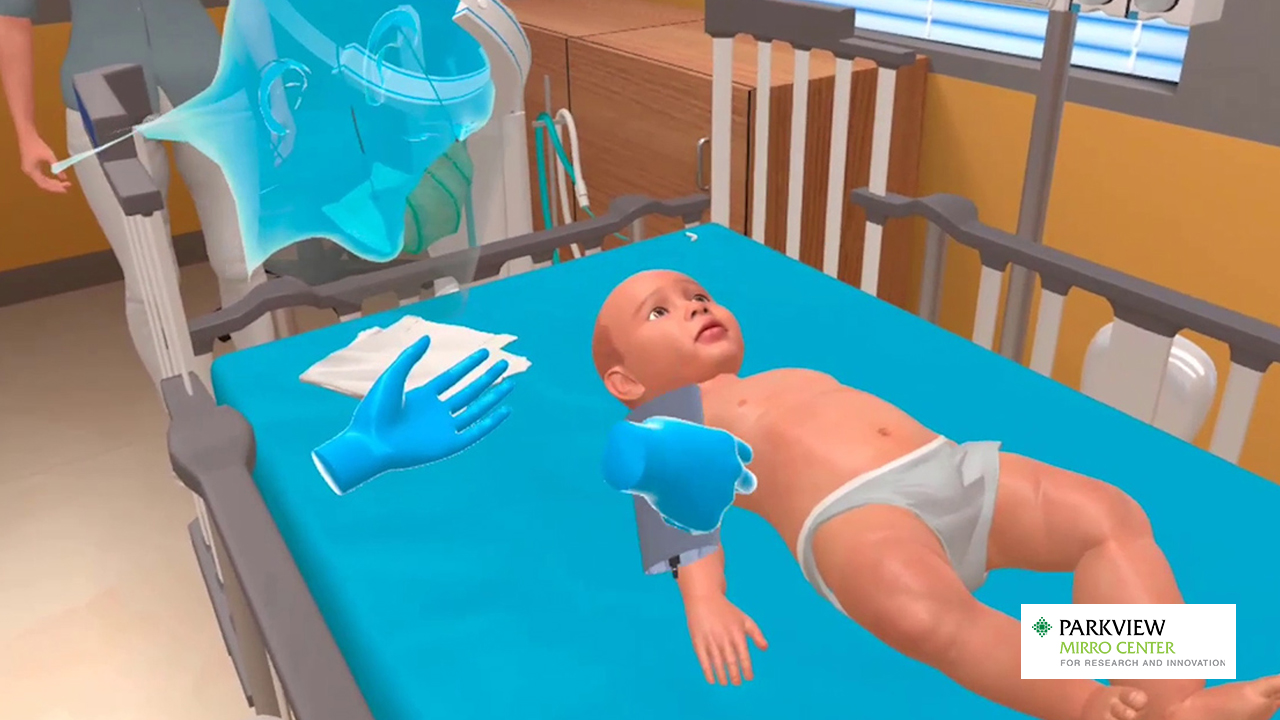
Proven to be highly effective in providing realistic and effective training, manikins have been a valuable part of the healthcare procedure training for a long time. However, a shift, though gradual, is now being witnessed. Technology has been advancing at its own pace and the possibilities of remote learning were being explored but with the coming of the pandemic a sudden and forced change came into effect. Remote learning was no more just an option. It became a necessity.
In these pressing times VR found its utility in unexpected (at least until then) fields. One such was healthcare procedure training. Until now, manikins were the preferred and most effective option for teaching medical procedures. A change can be observed wherein healthcare training can be VR-based and manikin-based.
Let us take a closer look at both training approaches.
Manikin-based clinical simulations
First and foremost, let us get a clear grasp on the term. Is it manikin or mannequin? The term mannequin is widely used to refer to a human dummy, mostly for the purpose of displaying apparels. Manikins, on the other hand, are full-body patient simulators used for training purposes in healthcare environments. They facilitate training in clinical skills, cognitive thinking, and communication skills. Many medical professionals still use the term ‘mannequin’, but we will refer to these patient simulators as manikins.
So, what are these manikins and how do they help in learning and developing clinical skills? Ranging from low-fidelity to high-fidelity, manikins are effectively used to simulate patient conditions, allowing learners to practice and assess their skills in realistic healthcare environments. Low-fidelity manikins can provide basic exercises in skills like IV insertions whereas the high-fidelity ones are close replicas of actual humans and are fitted with advanced computer technology which can be used to simulate actual patient conditions like childbirth, postpartum hemorrhage or mass casualty incidents.
Manikins are used in realistic set-ups mimicking healthcare environments and learners perform tasks under the guidance of educators and trainers. Sessions are mostly recorded for later analysis where learners can view their own performances, allowing them the opportunity to self-evaluate and learn from mistakes.
VR-based clinical simulations
Virtual reality or VR based simulations are rapidly making inroads in the field of learning and training, including healthcare. Learners are required to strap on a head-mounted device, login to a training session and perform tasks using hand-controllers. Once logged in, learners find themselves in photorealistic virtually simulated healthcare environments which are equipped with required equipment, referred to as affordances, and virtual patients to perform procedures.
Often guided by a virtual assistant, procedures are learned, practiced and assessed virtually. Learning can be tracked through a web-based XR platform where trainers can view learners’ progress, point out errors and suggest improvements. Learners can also view their personal performance and conduct a self-analysis of their skills.

Healthcare procedure training like bone marrow aspiration in VR can provide better understanding, and help gain confidence to perform in a real-life scenario.
Manikins or VR-based simulations or Both
Healthcare training needs had to be met, but at the same time pandemic rules would not allow regular training sessions to continue. It was more or less like a catch 22 situation. Training was a must, but how does one train in healthcare skills in isolation, with no equipment and, most significantly, with no ‘patient’, not even a manikin? Might have sounded like a baffling situation to tackle until some time ago but VR found its utility here.
Today, the world is opening up with training institutions and in-person classes resuming, but VR has found its footing and is here to stay. Right from basic phlebotomy skills to practicing critical surgeries, VR is providing learning, practicing, and assessment opportunities for all levels and areas in the medical field.
Manikin-based and VR-based training sessions have multiple things in common that bring them at par to a great extent.
VR creates the perfect healthcare scenario, provides all required affordances and helps practice in realistic environments with a virtual patient. Each immersive VR session provides learners with thorough practice sessions, helping refine each skill to the finest level. The same goes for a manikin-based training session, the only difference being that every element has a physical presence.
This one difference proves to be the biggest and most significant difference between VR-based and manikin-based training, especially in the healthcare sector. The tactile effect is missing. Yes, with the rate at which technology is advancing, haptic-feedback is not very far away but till then this difference will stay.
Significant healthcare figures
Let us digress a little and look at some numbers the healthcare sector is likely to face in the near future, especially the US.
– According to a WHO report, by the year 2030, the world may witness an estimated shortage of 18 million healthcare workers.
– A Mercer report estimates that by year 2025, the US alone is likely to face a shortage of 446,300 home health aides, 95,000 nursing assistants, 98,700 medical and lab technologists and technicians, and 29,400 nurse practitioners.
– An AAMC (Association of American Medical Colleges) report projects that by year 2032 the US will face a shortage of 122,000 physicians.
– The ANA (American Nurses Association), in a letter to the Department of Health and Human Services urged the “Administration to declare a national nurse staffing crisis.”
– The ICN (International Council of Nurses) estimates that due to the COVID 19 effect, “up to 13 million nurses will be needed to fill the global nurse shortage gap in the future.”
– An ACCN (American Association of College of Nursing) revealed that in the year 2019 due to shortage of faculty and clinical education sites, “8,471 qualified applicants were turned away from master’s programs, and 3,157 qualified applicants were turned away from doctoral programs”.
The one common thing that these figures point to is the need for stepping up measures to meet training and recruitment in the healthcare sector. Recruitment can only be possible when training demands are met and this brings us back to our training methods – VR and manikins.
Advantages of blending VR and manikin-based training
Manikin and VR-based training methods, when used together, can help overcome these training facility shortages. Manikins, no doubt, are an effective method of training but the development and maintenance of these training facilities requires manpower along with a large budget dedicated for the purpose. Plus, there are limitations to how many learners can learn at a time using one manikin. Under such circumstances, VR can be used to provide training and practice in procedures and skills. Once confident with the steps of the procedure, the learner can practice the same on a manikin to achieve the tactile advantage of practicing on a physical being.
VR training and physical training exist in two different world – the virtual and the real but putting the two together to achieve a common goal can deliver effective and efficient results.
– Photorealistic environments and physics-based interactions create a close-to-reality scenario helping build familiarity with real-life experiences.
– Multiple practice sessions in VR helps learners get absolutely certain of a procedure, thereby enhancing their efficiency. This means spending less time on a manikin.
– Less time per-learner on a manikin means more learners get an opportunity to learn in a certain time frame.
– Practicing on a manikin post-VR means less mistakes which in turn means less wear and tear of a manikin.
– Reduced wear and tear increase the ‘life’ of manikins and call for less replacements.
– Fewer replacements mean a drop in maintenance expenditure.
– With learners getting adequate practice in VR, the number of manikins to be maintained can also be scaled down.

Practice matters a lot in performing a painless phlebotomy procedure and VR offers multiple practice sessions to perfect the skill.
On the whole, blending VR and manikin-based training can provide better learning opportunities in less time and in an economical manner.
Manikins have stood the test of time, and for valid reasons. VR does not intend to replace manikins, at least not in the near future. The need is to make use of the best aspects of both and provide learners with learning experiences that brings out the best in them. The health of a nation, and the world, greatly lies in the hands of healthcare workers. The better they are trained the better they are prepared to face challenges and help keep the world healthier.
Contact us to know more about VR in healthcare training, or visit our MedVR Education webpage to explore the various programs we offer.


